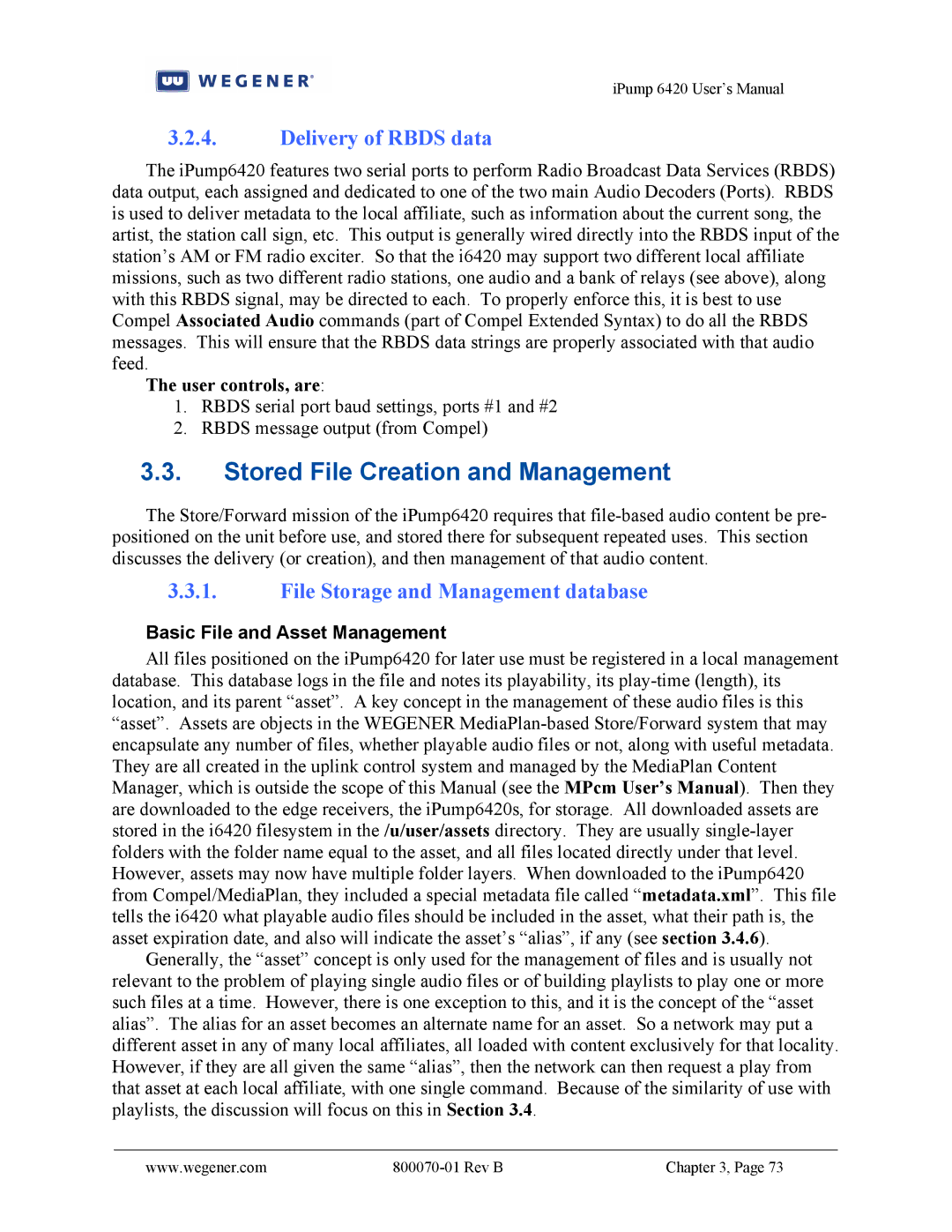
iPump 6420 User’s Manual
3.2.4.Delivery of RBDS data
The iPump6420 features two serial ports to perform Radio Broadcast Data Services (RBDS) data output, each assigned and dedicated to one of the two main Audio Decoders (Ports). RBDS is used to deliver metadata to the local affiliate, such as information about the current song, the artist, the station call sign, etc. This output is generally wired directly into the RBDS input of the station’s AM or FM radio exciter. So that the i6420 may support two different local affiliate missions, such as two different radio stations, one audio and a bank of relays (see above), along with this RBDS signal, may be directed to each. To properly enforce this, it is best to use Compel Associated Audio commands (part of Compel Extended Syntax) to do all the RBDS messages. This will ensure that the RBDS data strings are properly associated with that audio feed.
The user controls, are:
1.RBDS serial port baud settings, ports #1 and #2
2.RBDS message output (from Compel)
3.3.Stored File Creation and Management
The Store/Forward mission of the iPump6420 requires that
3.3.1.File Storage and Management database
Basic File and Asset Management
All files positioned on the iPump6420 for later use must be registered in a local management database. This database logs in the file and notes its playability, its
Generally, the “asset” concept is only used for the management of files and is usually not relevant to the problem of playing single audio files or of building playlists to play one or more such files at a time. However, there is one exception to this, and it is the concept of the “asset alias”. The alias for an asset becomes an alternate name for an asset. So a network may put a different asset in any of many local affiliates, all loaded with content exclusively for that locality. However, if they are all given the same “alias”, then the network can then request a play from that asset at each local affiliate, with one single command. Because of the similarity of use with playlists, the discussion will focus on this in Section 3.4.
www.wegener.com |
| Chapter 3, Page 73 |
